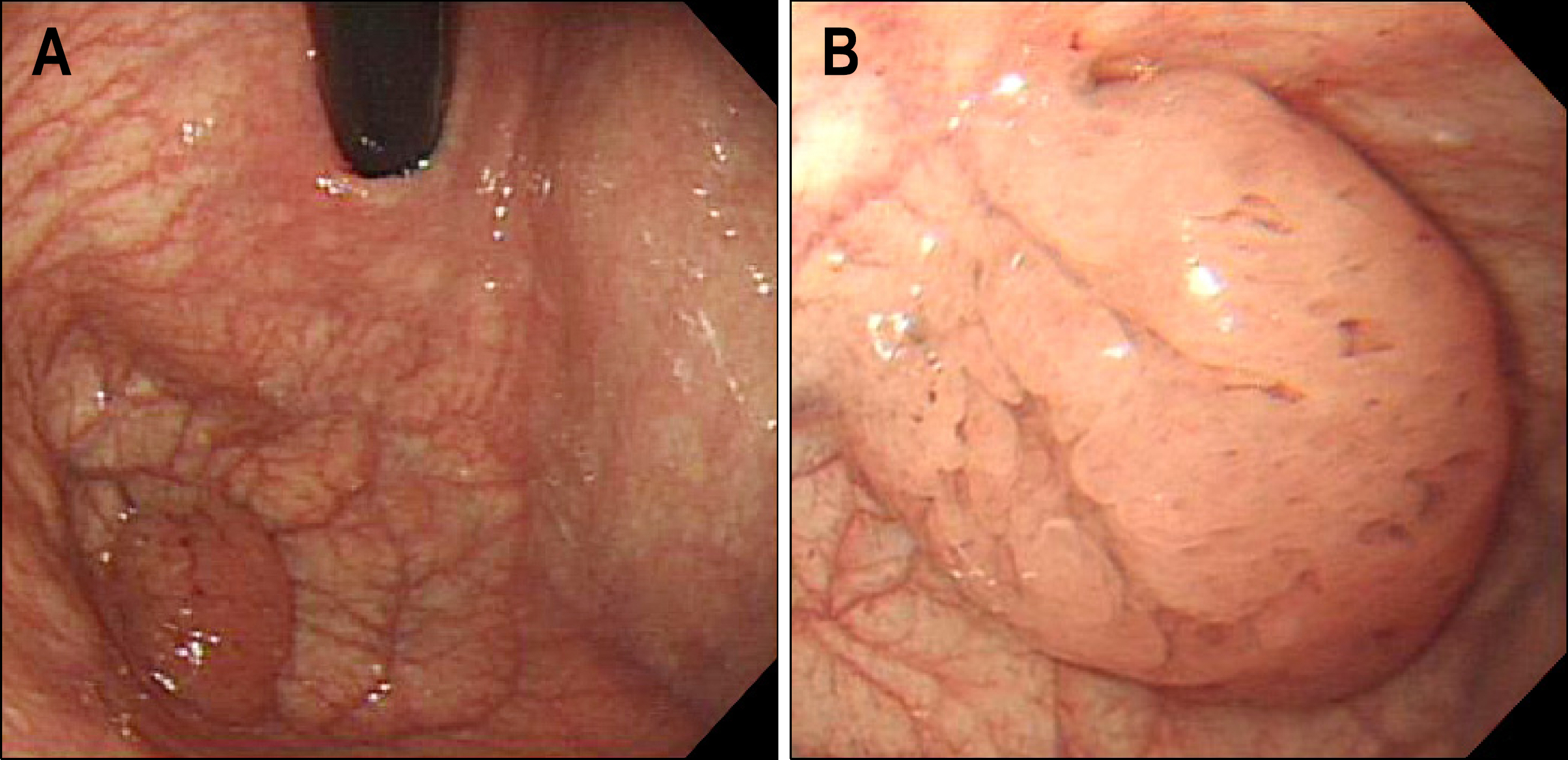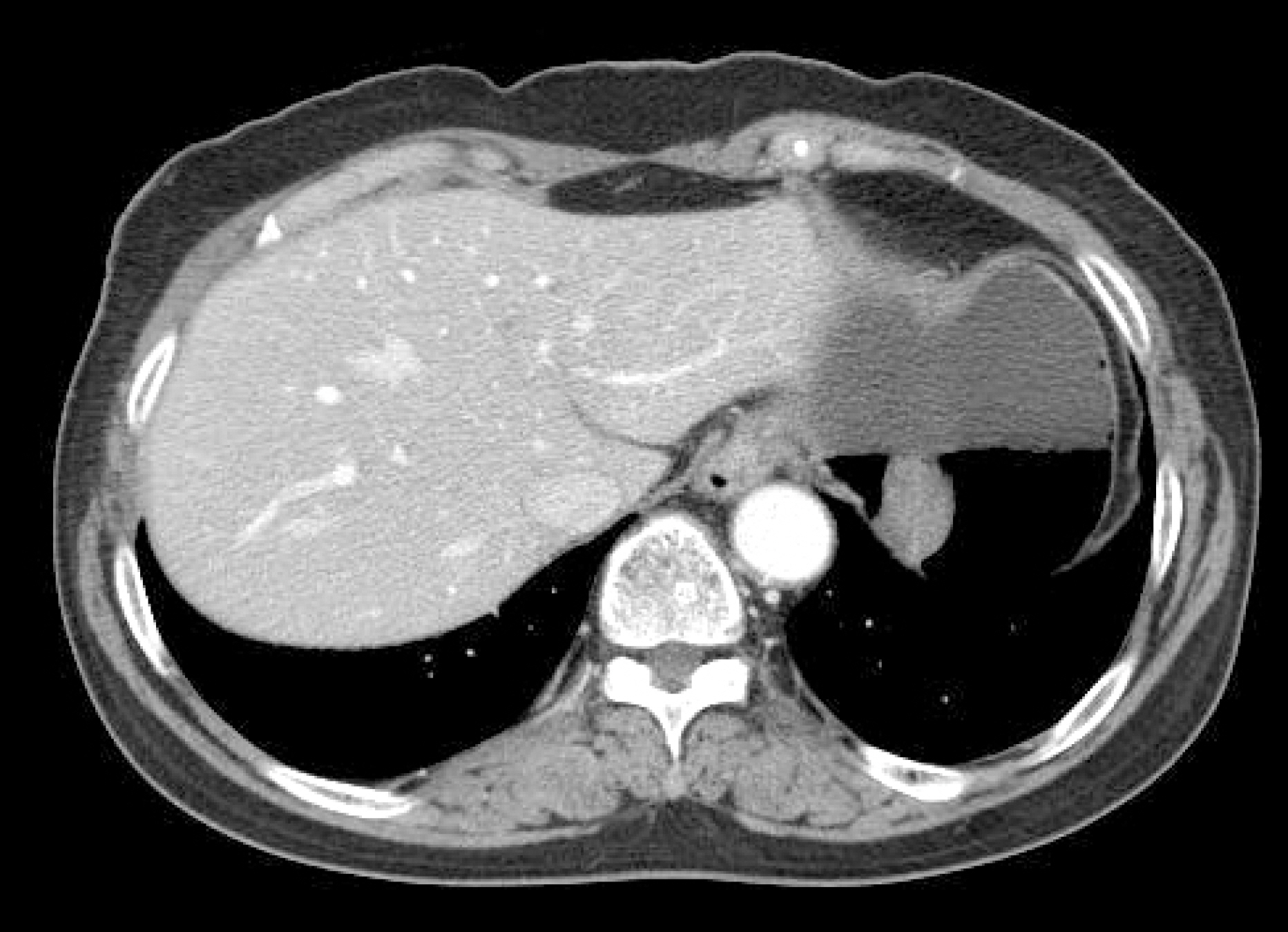Korean J Gastroenterol.
2010 Jul;56(1):1-5. 10.4166/kjg.2010.56.1.1.
A Spongiform Mass in the Stomach: Pyloric Gland Adenoma with a Transition to Adenocarcinoma
- Affiliations
-
- 1Center for Gastric Cancer, National Cancer Center, Goyang, Korea. crystal522@ncc.re.kr
- 2Department of Pathology, National Cancer Center, Goyang, Korea.
- KMID: 1775871
- DOI: http://doi.org/10.4166/kjg.2010.56.1.1
Abstract
- No abstract available.
Figure
Reference
-
1. Kang HJ, Park DY, Kim KH, Song GA, Lauwers GY. Pathologic diagnosis of gastric epithelial neoplasia. Korean J Gastroenterol. 2008; 52:273–280.2. Abraham SC, Park SJ, Lee JH, Mugartegui L, Wu TT. Genetic alterations in gastric adenomas of intestinal and foveolar phenotypes. Mod Pathol. 2003; 16:786–795.
Article3. Abraham SC, Montgomery EA, Singh VK, Yardley JH, Wu TT. Gastric adenomas: intestinal-type and gastric-type adenomas differ in the risk of adenocarcinoma and presence of background mucosal pathology. Am J Surg Pathol. 2002; 26:1276–1285.4. Elster K. Histologic classification of gastric polyps. Curr Top Pathol. 1976; 63:77–93.
Article5. Vieth M, Kushima R, Borchard F, Stolte M. Pyloric gland adenoma: a clinicopathological analysis of 90 cases. Virchows Arch. 2003; 442:317–321.
Article6. Chen ZM, Scudiere JR, Abraham SC, Montgomery E. Pyloric gland adenoma: an entity distinct from gastric foveolar type adenoma. Am J Surg Pathol. 2009; 33:186–193.7. Chung IS, Chung KW, Sun HS, et al. Clinicopathologic evaluation of endoscopic mucosal resection of early gastric carcinomas and gastric adenomas. Korean J Gastroenterol. 1996; 16:15–24.8. Kushima R, Mü ller W, Stolte M, Borchard F. Differential p53 protein expression in stomach adenomas of gastric and intestinal phenotypes: possible sequences of p53 alteration in stomach carcinogenesis. Virchows Arch. 1996; 428:223–227.
Article9. Kushima R, Vieth M, Borchard F, Stolte M, Mukaisho K, Hattori T. Gastric-type well-differentiated adenocarcinoma and pyloric gland adenoma of the stomach. Gastric Cancer. 2006; 9:177–184.
Article10. Jung CK, Song KY, Park G, et al. Mucin phenotype and CdX2 expression as prognostic factors in gastric carcinomas. Korean J Pathol. 2007; 41:139–148.11. Tajima Y, Yamazaki K, Makino R, et al. Gastric and intestinal phenotypic marker expression in early differentiatedtype tumors of the stomach: clinicopathologic significance and genetic background. Clin Cancer Res. 2006; 12:6469–6479.
Article12. Nagata S, Ajioka Y, Nishikura K, et al. Co-expression of gastric and biliary phenotype in pyloric-gland type adenoma of the gallbladder: immunohistochemical analysis of mucin profile and CD10. Oncol Rep. 2007; 17:721–729.
Article
- Full Text Links
- Actions
-
Cited
- CITED
-
- Close
- Share
- Similar articles
-
- A Case of Pyloric Gland Adenoma in the Cardia of the Stomach, Treated by Endoscopic Submucosal Dissection
- Pyloric Gland Adenoma of the Esophagus Treated by Endoscopic Submucosal Dissection: A Case Report
- Ductal Adenocarcinoma Arising from Heterotopic Pancreas in the Stomach: A Case Report
- A Case of a Giant Brunner's Gland Hamartoma Originating from the Pyloric Ring
- Serrated Adenoma with Adenocarcinoma of Stomach Treated by Endoscopic Submucosal Dissection





